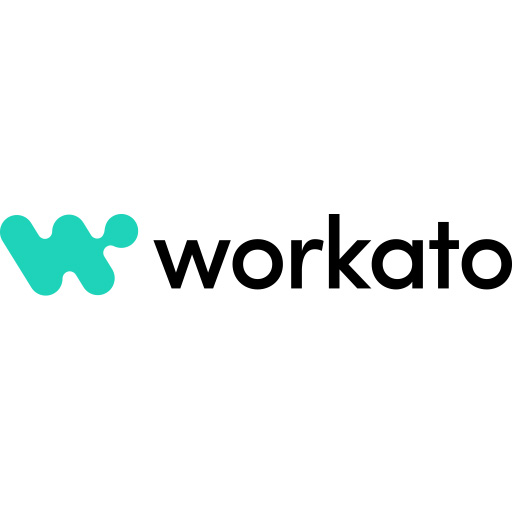SAP Order Management
Filter By
Browse By
- SAP Analytics and AI
- SAP Application Development and Integration
- All SAP Application Development and Integration
- SAP ABAP
- SAP ABAP Development Tools
- SAP ABAP Test Cockpit
- SAP API Management
- SAP BAPI
- SAP Basis
- SAP BRF
- SAP Business Application Studio
- SAP CMS
- SAP Design Studio
- SAP Development Tools
- SAP DevOps
- SAP EAI
- SAP EDI
- SAP Extension Suite
- SAP Fiori
- SAP Fiori Elements
- SAP Integration Suite
- SAP Low Code Application Development
- SAP Low Code Automation
- SAP Netweaver
- SAP Release Management
- SAP UI5
- SAP Web Application Server
- SAP Web IDE
- SAP Business Process Management
- SAP Center of Excellence
- SAP CIO
- SAP Customer Experience
- SAP Data and Data Management
- All SAP Data and Data Management
- SAP BW
- SAP BW/4HANA
- SAP Crystal Reports
- SAP Data Archiving
- SAP Data Center
- SAP Data Governance
- SAP Data Integration
- SAP Data Migration
- SAP Data Quality
- SAP Data Services
- SAP Data Strategy
- SAP Data Visualization
- SAP Data Warehouse Cloud
- SAP DMS
- SAP Document Control
- SAP EIM
- SAP ETL
- SAP ETL Tools
- SAP HANA
- SAP HANA Administration
- SAP HANA Deployment Infrastructure
- SAP HANA Studio
- SAP Master Data
- SAP Master Data Governance
- SAP MDM
- SAP Enterprise Architect
- SAP Enterprise Asset Management
- SAP ERP
- SAP Finance
- All SAP Finance
- SAP Accounting
- SAP AR AP
- SAP Asset Accounting
- SAP Billing Systems
- SAP BPC
- SAP BRIM
- SAP Cash Management
- SAP Central Finance
- SAP Controlling
- SAP COPA
- SAP Cost Center Accounting
- SAP Currency Risk
- SAP e-invoicing
- SAP FICO
- SAP Finance Automation
- SAP Advanced Financial Closing
- SAP Financial Consolidation
- SAP Financial Planning
- SAP FX Risk
- SAP General Ledger
- SAP Global Tax Management
- SAP Hyperion
- SAP Order to Cash
- SAP Payment Processing
- SAP Profitability Analysis
- SAP Rebate Management
- SAP S/4HANA Finance
- SAP SWIFT Compliance
- SAP Treasury Management
- SAP Universal Journal
- SAP Governance Risk and Compliance
- SAP Human Capital Management
- SAP Intelligent Technologies
- SAP Platform and Technology
- All SAP Platform and Technology
- SAP Business Technology Platform
- SAP Cloud
- SAP Cloud Connector
- SAP Cloud Integration Platform
- SAP Cloud Migration
- SAP Cloud Platform
- SAP Cloud Providers
- SAP Cloud Strategy
- SAP Digital Signature
- SAP Container Platform
- SAP HANA Enterprise Cloud
- SAP Digital Asset Management
- SAP Smart Forms
- SAP HEC
- SAP Digital Integration Hub
- SAP Hyperscalers
- SAP Infrastructure
- SAP Messaging
- SAP Quality and Testing
- SAP Security
- SAP Spend Management
- SAP Supply Chain Management
- All SAP Supply Chain Management
- SAP APO
- SAP Asset Management
- SAP Business Network
- SAP Digital Manufacturing Cloud
- SAP Digital Twin
- SAP EWM
- SAP IBP
- SAP Inventory Management
- SAP Label Printing
- SAP Logistics
- SAP Manufacturing
- SAP Manufacturing Automation
- SAP MES
- SAP MII
- SAP MM
- SAP MRO
- SAP MRP
- SAP Order Management
- SAP Plant Maintenance
- SAP PLM
- SAP Production Planning
- SAP S&OP
- SAP SD
- SAP SPM
- SAP Supply Chain Planning
- SAP Track and Trace
- SAP Transportation Management
- SAP System Administration
Supply Chain Management: SAP Order Management
High volume, high velocity, high expectation. These are the three key consequences of the rise of e-commerce and customer expectation today. The smoother and faster the flow, the more orders the company can process, and the quicker the business is able to grow.
Order Management Simply Defined
Order management refers to the process of receiving, tracking, and fulfilling customer orders. The order management process begins when an order is placed and ends when the customer gets the package. Some challenges for companies today include human errors, process backlogs, visibility, transportation errors, and poor communication.
An order management system can automate and streamline the ordering processes, with some companies choosing SAP Order Management for a solution. The entire process generally consists of accepting an order, picking, packing, and shipping the items. The SAP Hybris Order Management module helps organizations streamline the order processes across all the channels. Different search options are available under each category, where users can search for all the orders. Some options are delivery, pickup, or list of all orders available.
Supply Chain Management: SAP Order Management
High volume, high velocity, high expectation. These are the three key consequences of the rise of e-commerce and customer expectation today. The smoother and faster the flow, the more orders the company can process, and the quicker the business is able to grow.
Order Management Simply Defined
Order management refers to the process of receiving, tracking, and fulfilling customer orders. The order management process begins when an order is placed and ends when the customer gets the package. Some challenges for companies today include human errors, process backlogs, visibility, transportation errors, and poor communication.
An order management system can automate and streamline the ordering processes, with some companies choosing SAP Order Management for a solution. The entire process generally consists of accepting an order, picking, packing, and shipping the items. The SAP Hybris Order Management module helps organizations streamline the order processes across all the channels. Different search options are available under each category, where users can search for all the orders. Some options are delivery, pickup, or list of all orders available.
5 Simple Ways to Improve Order Management are:
- Employee engagement
- Sync the customer order system to the inventory
- Make it simple and useful to the customer
- Automate, automate, automate
- Consolidate order channels.
Take control of your process operations and put your customer relationships first. Order management relies upon almost every department in a company. From a customer service team to the warehouse staff, the accounting department through to delivery partners. When mastered effectively, order management ensures a business’s workflow runs smoothly. This is achieved by establishing efficient processes to keep it moving forward, maintaining customer satisfaction, and protecting a company’s reputation.
Benefits of SAP Order Management:
- Increased revenue
- Increased customer satisfaction
- Reduce inventory carrying costs
- Achieve greater employee productivity.
Vendor partners offering software solutions or operational intelligence solutions are: SAP, Gib, or OpsVeda.
Key Considerations for SAPinsiders are:
- Order Management Automation: Ensuring a Successful Implementation in any Environment. Watch the webinar to introduce automation to your order management processes and transform the effects on your cashflow.
- Real-Time Inventory and Order Visibility: Key for Successful Supply Chain Management. Probodh Chiplunkar at Ithena Technologies shares an article on how today’s technological landscape affects business organizations. Transparency can increase customer retention and reach, helping companies achieve successful and profitable omnichannel ordering capabilities.
399 results
-

- SAP Cloud Platform
 Premium
Premium
Intelligent Supply Chain Management with SAP Cloud Platform
Reading time: 20 mins
Learn how to optimize your supply chain management process using cloud services from SAP Cloud Platform. The scenario used in this article identifies the inconsistent data readings at run time and forecasts failures. It also describes how SAP Cloud Platform proactively generates a purchase order if required. With the help of SAP Cloud Platform, you...…
-

 Premium
Premium
Track Cross-Company Sales Using BW’s Return Tables
Reading time: 16 mins
Reporting on cross-company sales is sometimes confusing in BW because of the way company codes are assigned. It can be difficult to see from which division sales are being received. BW has a feature called “return tables” that can get you around this problem, and the author explains how. A global company often trades goods...…
-

 Premium
Premium
How Internal Orders Differs from Project System in Overseeing Capital Projects
Reading time: 12 mins
Often managers are unsure whether to use Internal Orders or Project System (PS) for managing capital projects. The author compares the two methods so that you can make your own decision about which is best suited for your capital project. For example, did you know that PS allows you to create multiple versions of a...…
-
-

 Premium
Premium
Include Actual Costs in COGS with Material Ledger in Release 4.7
Reading time: 14 mins
Does your cost of goods sold (COGS) figure match your actual costs? Learn how to use new functionality in the material ledger to complete the value flow through R/3 and assign price differences to the cost of sales accounts to ensure that the COGS reflects the actual costs. Key Concept SAP uses the term “actual...…
-

 Premium
Premium
Standard Tools Can Eliminate Multi-Source Consignment Confusion
Reading time: 17 mins
See how to resolve problems related to ownership of materials that affect supply chain processes such as inventory tracking and invoicing. Key Concept Multi-source consignment refers to raw materials purchased from different vendors, but stored or mixed together in a common container, such as beverages or food items. Although it is not a best practice,...…
-

 Premium
Premium
Realize a Faster Design Build by Procuring Components without Building the Assemblies
Reading time: 10 mins
SCMProcuring components without building assembly production orders is a common requirement for creating product prototypes. You can meet this demand by creating a forecast for the assembly material and running material requirements planning (MRP). Discover the material master settings to use and walk through a test procedure for verifying the functionality. Key Concept Planning without...…
-

 Premium
Premium
Accurately Plan Configurable Products with SAP APO Characteristics Dependent Planning
Reading time: 13 mins
Learn about the basic concepts of characteristics dependent planning (CDP) and how to use CDP for accurately planning configurable products within an SAP Advanced Planning & Optimization environment. Key Concept Configurable products are make-to-order (MTO) products in which variations are managed under a single product number as attributes (characteristics). The final product is dynamically configured...…
-
-

 Premium
Premium
Enhance Report-Report Interface: Create Custom Report Type as Receiver
Reading time: 16 mins
With the proliferation of front-end reporting tools comes the challenge of achieving a seamless navigation within applications composed of multiple report types. It also results in a greater need to pass complex sets of parameters from one report to another. When standard methods offered by Report-Report Interface fail to support such requirements, users often must...…
-

 Premium
Premium
SAP APO and the Bentley Continental GT: Communicating with a Common Frame of Reference
Reading time: 24 mins
Use this detailed summary of SAP Advanced Planning and Optimization as an effective tool for explaining its concepts to coworkers and partners with less experience with the system. Key Concept Most experts in SAP Advanced Planning and Optimization (SAP APO) became experts the hard way – through hard work, learning from the bottom up, and...…
-

 Premium
Premium
Planning with TP/VS: The Third Pillar of Transportation Management
Reading time: 23 mins
See how Transportation Planning/Vehicle Scheduling (TP/VS) enhances and complements the SAP Logistics Execution System solution and takes transportation planning to the next level with full integration into the document flow. Key Concept Transportation Planning/Vehicle Scheduling (TP/VS) supports any transportation process in a company. It helps the transportation planner in daily tasks with automatic tools, such...…
Become a Member
Unlimited access to thousands of resources for SAP-specific expertise that can only be found here.
Become a Partner
Access exclusive SAP insights, expert marketing strategies, and high-value services including research reports, webinars, and buyers' guides, all designed to boost your campaign ROI by up to 50% within the SAP ecosystem.
Upcoming Events
Related Vendors
Your request has been successfully sent


